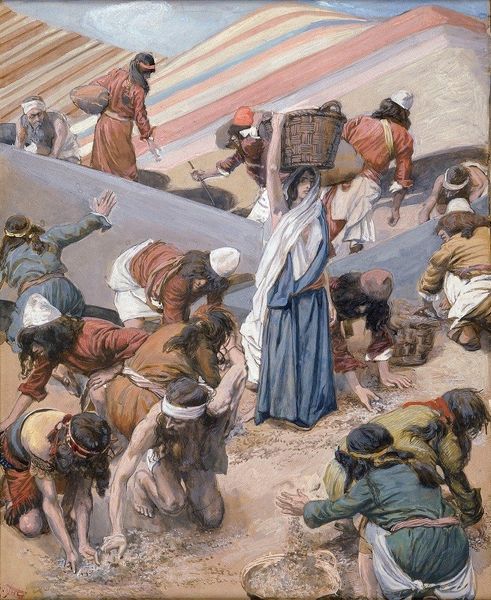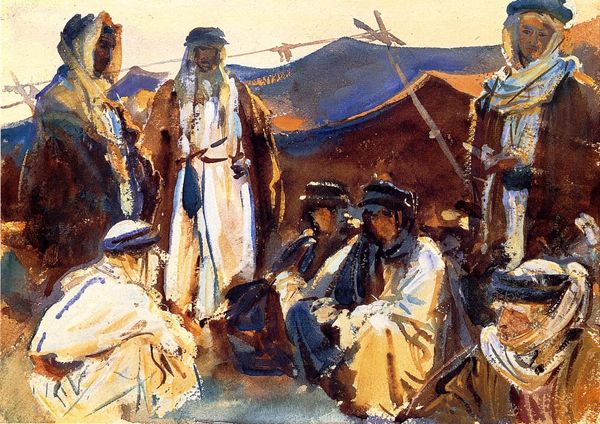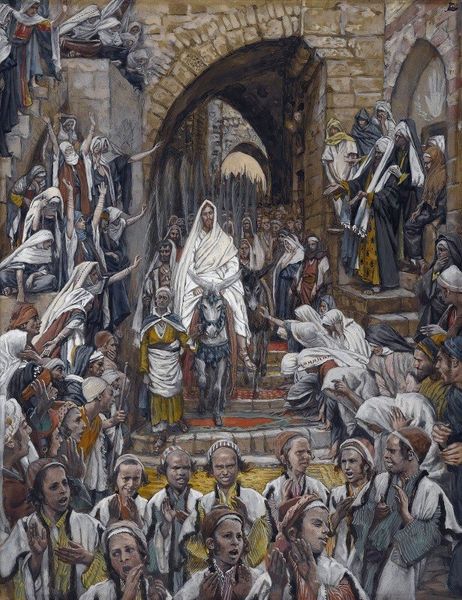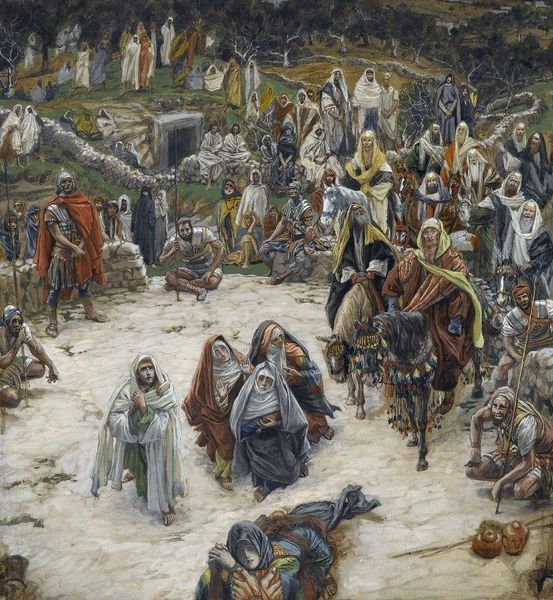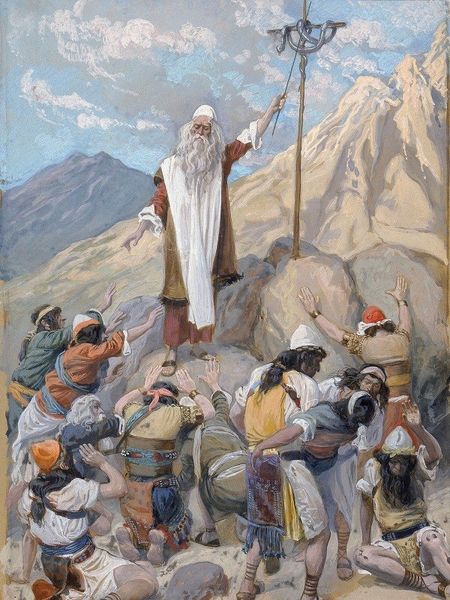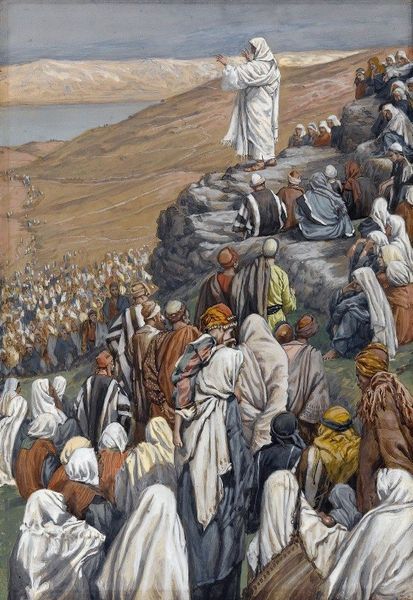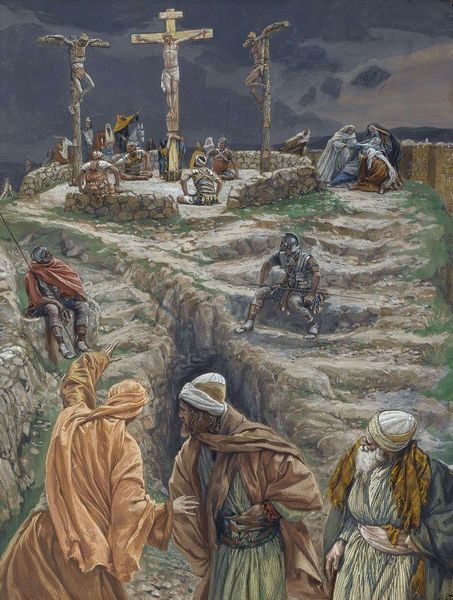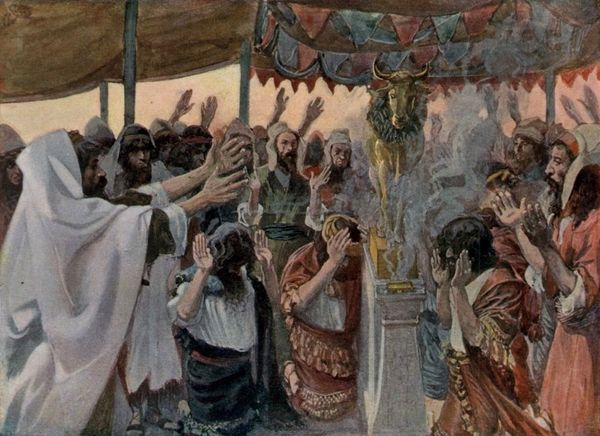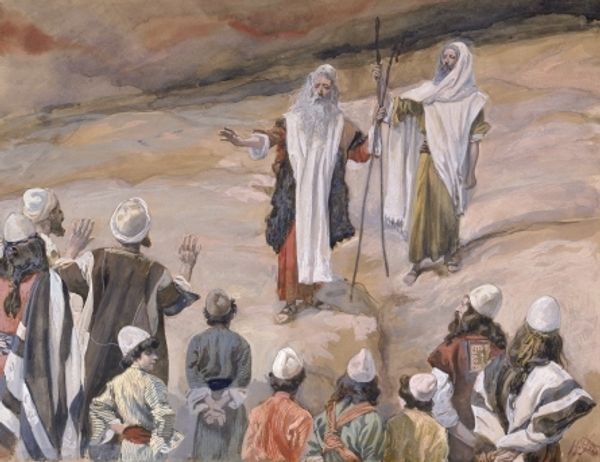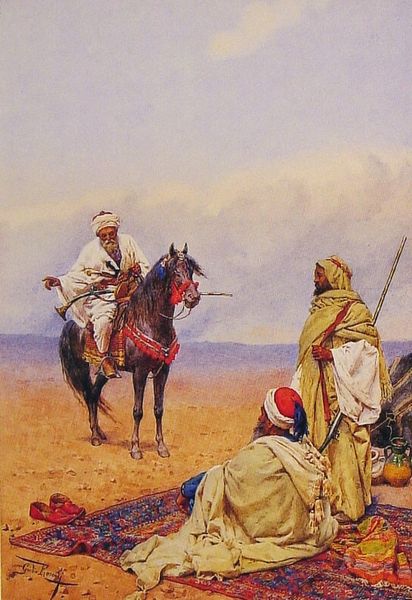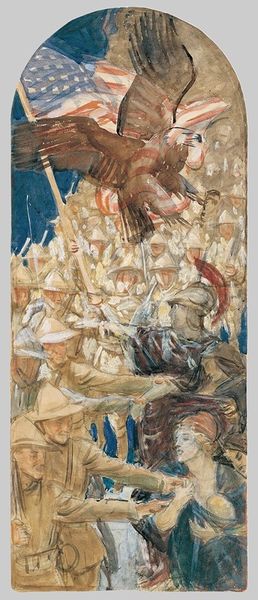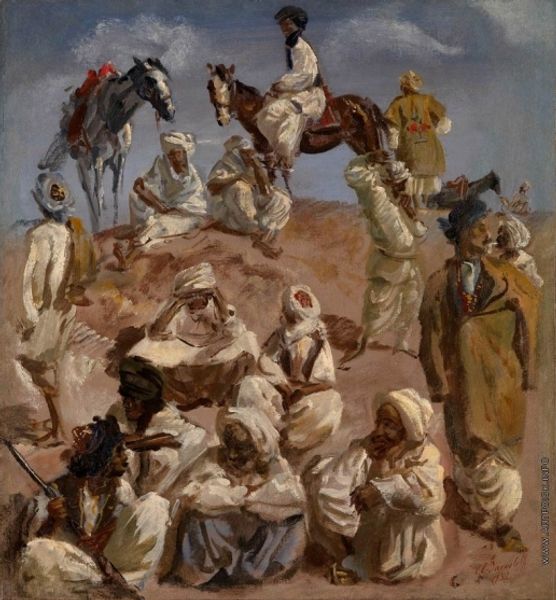
Copyright: Public Domain: Artvee
James Tissot painted "Rebecca Meets Isaac by the Way," during a period marked by significant shifts in religious and social norms. As we consider the historical context, it's interesting to remember that this painting emerges from Tissot's deep engagement with biblical narratives, reflecting his attempt to visualize and interpret these stories. Look at Rebecca on her camel, part of a caravan moving through a desert landscape; the painting captures a moment of encounter. Note how Tissot renders Rebecca’s veiled presence with an emphasis on modesty and grace, aligning with traditional expectations of women. At the same time, the depiction of exoticism and the detailed rendering of the Middle Eastern setting invite reflection on the Orientalist perspectives prevalent during Tissot’s era. This painting reflects the intricacies of identity and representation within a colonial context, evoking questions about the power dynamics between the artist, his subjects, and his audience. While focusing on faith, the painting provides us with a lens through which to consider the historical construction of cultural and religious identities.
Comments
No comments
Be the first to comment and join the conversation on the ultimate creative platform.
